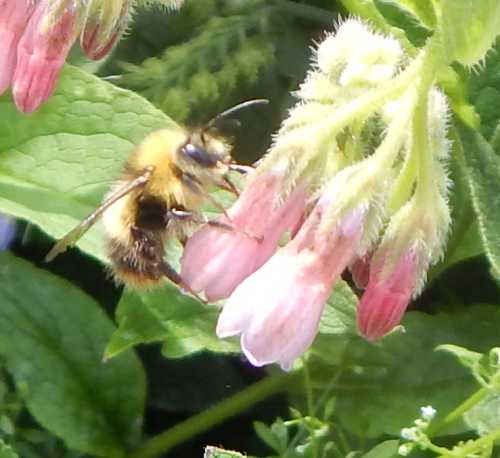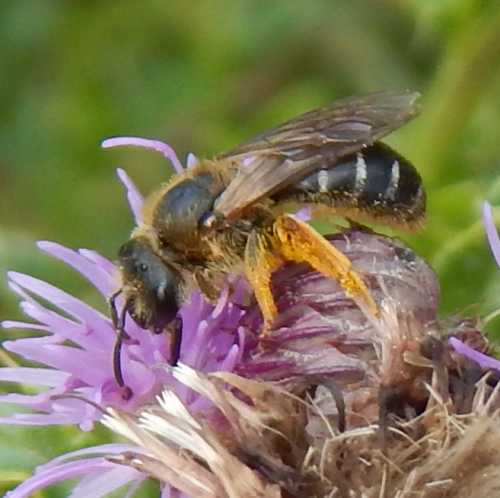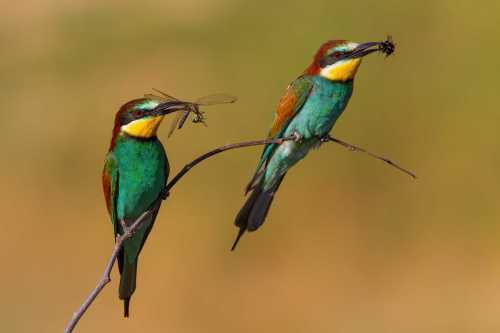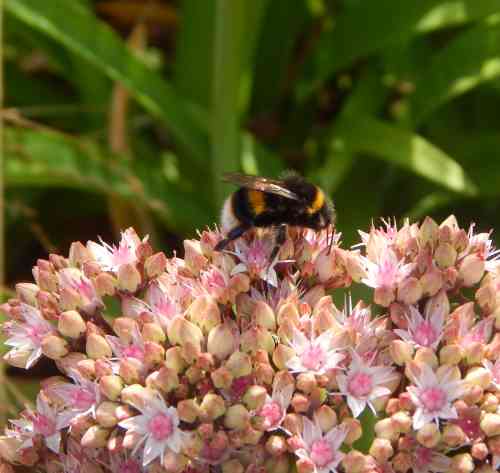What Do Bees Eat?
Updated: February 2025
Bees mostly eat and drink pollen and nectar from flowers, but
there are some differences in bee diets depending on the age of the bee and species.
Why do bees eat pollen and nectar?
Pollen is a rich source of protein for bees, whilst the sweet nectar provides
energy and also helps to maintain water balance in the diet.
Pollen (mixed with a little nectar) is often stored as food for larvae and deposited in individual egg cells.
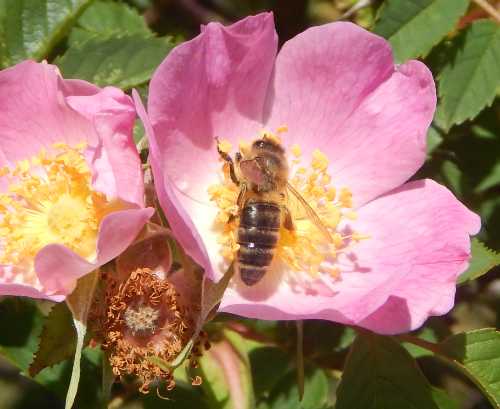
Do bees only feed on nectar and pollen from flowers?
Bees mostly feed on nectar and pollen gathered from flowers, but there are a few exceptions and bees will sometimes find food elsewhere:
1. Insect secretions - honeydew
Honeydew is a sugar-rich sticky liquid, secreted by aphids and some scale insects, as they feed on plant sap.
When food is scarce, you may see honey bees and bumble bees eating it as a substitute for nectar although it is believed to be not as nutritious as nectar.
Below is a wonderful photograph kindly sent to me by Valerie Nicolson. She observed honey bees feeding on aphid honeydew on the underside of the leaves of her lime and lemon trees.
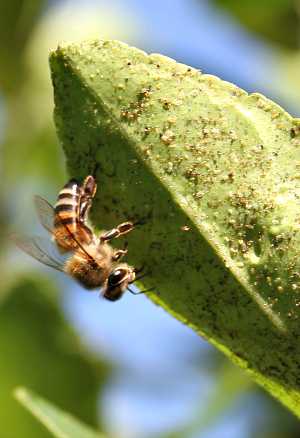 Above: Honey bee feeding on aphid honeydew, photo received and published with permission, by Valerie Nicolson.
Above: Honey bee feeding on aphid honeydew, photo received and published with permission, by Valerie Nicolson.2. Very ripe fruit
Honey bees have been noted to feast on soft, very ripe fruit, including the sweet juice of plums, peaches and pears.
3. Extra-floral nectaries
Bees will sometimes eat the sweet secretions from extra-floral nectaries found on the green leaves of plants and shrubs. I have witnessed this in a forest, when bees were feeding on the underside of laurel leaves.
4. Meat
There are bees in the tropics which are known to eat meat, which can mean the flesh dead or decaying vertebrates.
Although not common, there have been multiple recordings of bumble bees consuming meat, presumably for dietary reasons.
Are bees vegetarian or vegan?
It is generally assumed that bees are
vegetarian and vegan with only a few exceptions.
However, more recently, this has been debated, and some scientists argue that the eating of pollen means that bees are in fact omnivores.
Do bees eat honey?
It should be noted that flowers do not secrete honey, so nectar and honey are not the same thing. Honey is basically a stored food which made by bees from nectar. Honey is not made by all bee species.
The honey that people are familiar with (purchased in a jar) is made by honey bees.
What do bumble bees eat?
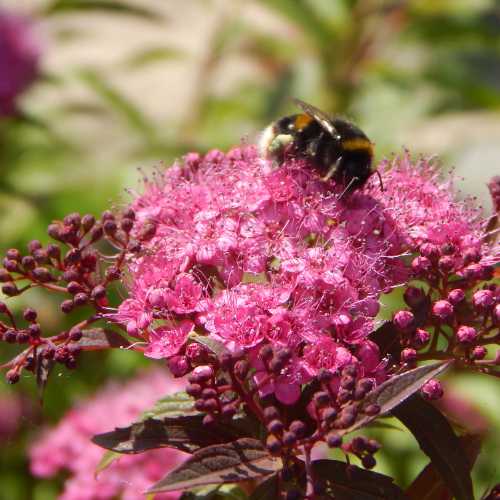
Adult workers mostly eat nectar with a little pollen, queens consume both nectar and pollen.
Bumble bee larvae initially eat pollen the queen has stored for them, but as they grow and develop, they eat regurgitated nectar and pollen fed to them by the queen and fully grown adult workers.
Read about the life cycle of bumble bees.
What do honey bees eat?
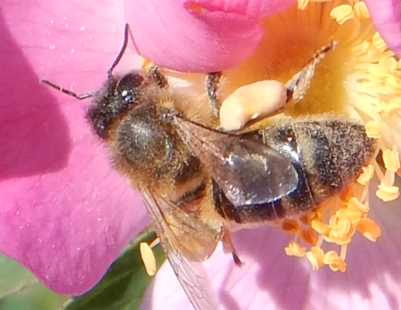
The main diet of adult honey bees is nectar and pollen. Larvae are fed royal jelly which is a protein-rich secretion made by young worker bees which comes from a pair of long glands coiled in the sides of the head.
The amount fed to the larvae depends on their future role in the colony. Grubs destined to become workers are fed bee bread (a substance made from honey and pollen) and just a little royal jelly, whereas those destined to become queens will be fed only on royal jelly. Drones (males) are fed a little more of this special food than workers.
Honey is made by bees to feed the colony through the winter, see: why bees make honey.
Bees kept by beekeepers may at times be fed sugar. You can read more about that why beekeepers feed sugar to bees.
Common misconceptions
Bees do not eat wood
Watching wood boring bees or
carpenter bees can lead people to ask the question, however, bees do not eat wood, rather some species make may chew into wood to create a nest.
Mud collecting is for nest building, not eating
You may witness mason bees collecting mud, however, this is for the construction of nest cells.
References
1. Roubik DW. Obligate necrophagy in a social bee. Science. 1982 Sep 10;217(4564):1059-60. doi: 10.1126/science.217.4564.1059. PMID: 17839343.
Plus see links to other pages for more information.
If you found this page helpful or interesting, I'd really be grateful if you would share it with others - if not this page, perhaps another, such as Gardening For Bees.
Thank you so much :) .
